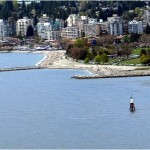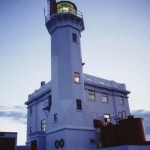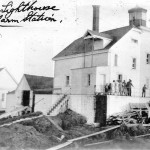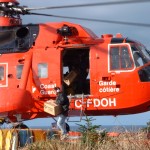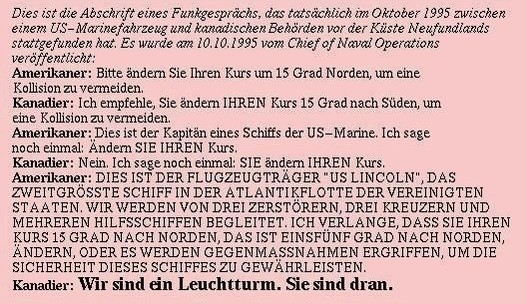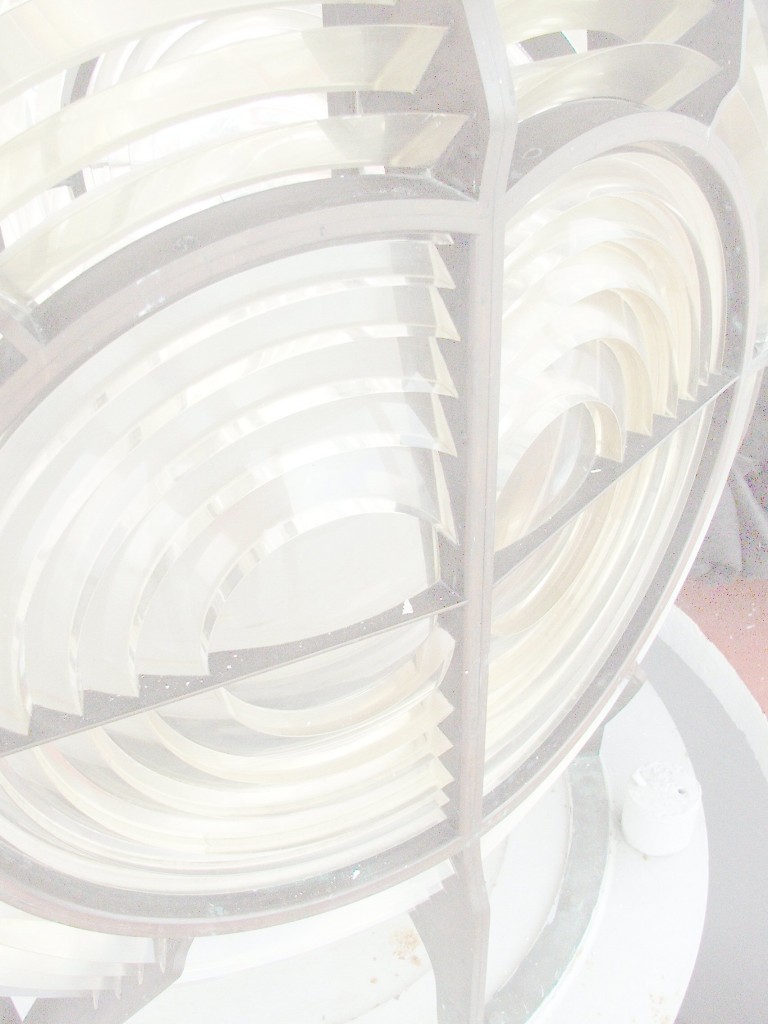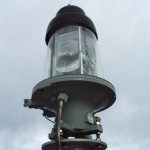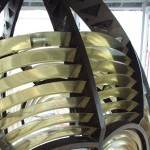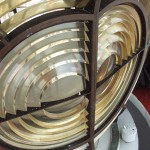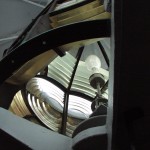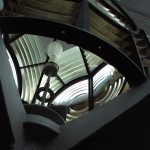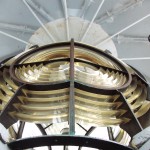Kerosene to Electricity
In the early days of lighthouses all lighthing was by kerosene lamps with wicks. When electricity first came to the lights, it was only for running the main light and occassionally for operation of the foghorn solenoids. Sometimes a knowledgeable principal keeper would wire in a light to his house – a single cable hanging from the ceiling with a small wattage bulb – usually in the kitchen.
Later came large generators and a bit more power. I say a ‘bit’ more. My first station at Pulteney Point had a 5 KW Kato generator run by a two-cylinder Lister diesel engine which supplied power to the main light, radio, and foghorn controls. The rest of the available current was left to be split between the three keeper’s houses. In 1969 our house was only one year old but had one electrical outlet per room and only two circuits per house. To have boiled eggs and toast for breakfast we had to wait until the principal keeper had finished cooking his breakfast – or cook before he got up – remember, we were on shifts. We would plug the hotplate in one outlet

in the kitchen to boil the eggs (oil stove was so-o-o-o-o slow for boiling water) and the toaster in an outlet in the back bedroom (different circuit). That way both would be ready at same time! I remember the wives comparing times when they would be doing ironing. If you overloaded the circuits the engine would shut down and the main light would go out. This was a no-no!
Later the Coast Guard increased the size of the generators so that we had forty (40) amps (amperes) per house for electrical current but compared to a modern house in town running 100 amps minimum we still had to be careful. We generated 220 volts at 60 cycles but depending on the length of run of cable to the house, this could drop to 210 volts and 57 cycles. We could never run an electric clock on any lighthouse as the cycles were so erratic. You could lose 5 minutes or more in a day! By the time I left in 2001 the maximum we had was 60 amp breaker boxes in each house but if you didn’t watch it you could still overload the engines and shut them down.
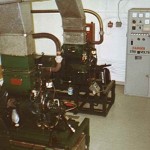
Unfortunately overloading was not the only problem. In the early days we had two 5KW (kilowatt) engines coupled to two-cylinder diesel engines. We would run one for a week, shut it down, do an oil and filter change and start it up again. If it had too many hours on it we waited for a replacement and ran the standby, praying for a ship to deliver the new engine. This worked very well. We checked them hourly for oil leaks and opened and closed windows for ventilation depending on room temeprature and weather.
Later, when the government got it into its head to try automating everything, they attached all kinds of sensors to our trusty diesels. Well the engines worked great but the sensors were always malfunctioning and shutting down the engines. We had oil temperature and pressure sensors, high and low voltage sensors, air temperature sensors and battery voltage sensors plus . . . I’ve forgotten all the reasons that a sensor could shut down an engine, but they did. We had an alarm in the house which sensed when the power went off (usually at night when we were sleeping) and rang a loud bell. Up we got from bed, dressed and headed up to the engine room. Hopefully the standby engine had started but usually it did not. If the sensor shut down the engine it usually shut down the control panel. Once we reset the panel, fired up the standby engine (just in case it was the poor main engine’s fault), checked out the problem engine, switched engines and wrote our log books and notified Coast Guard Radio that our light had been off it was usually time to start getting ready for our first weather of the morning at 3 AM (0300). Continue reading What You Take for Granted
